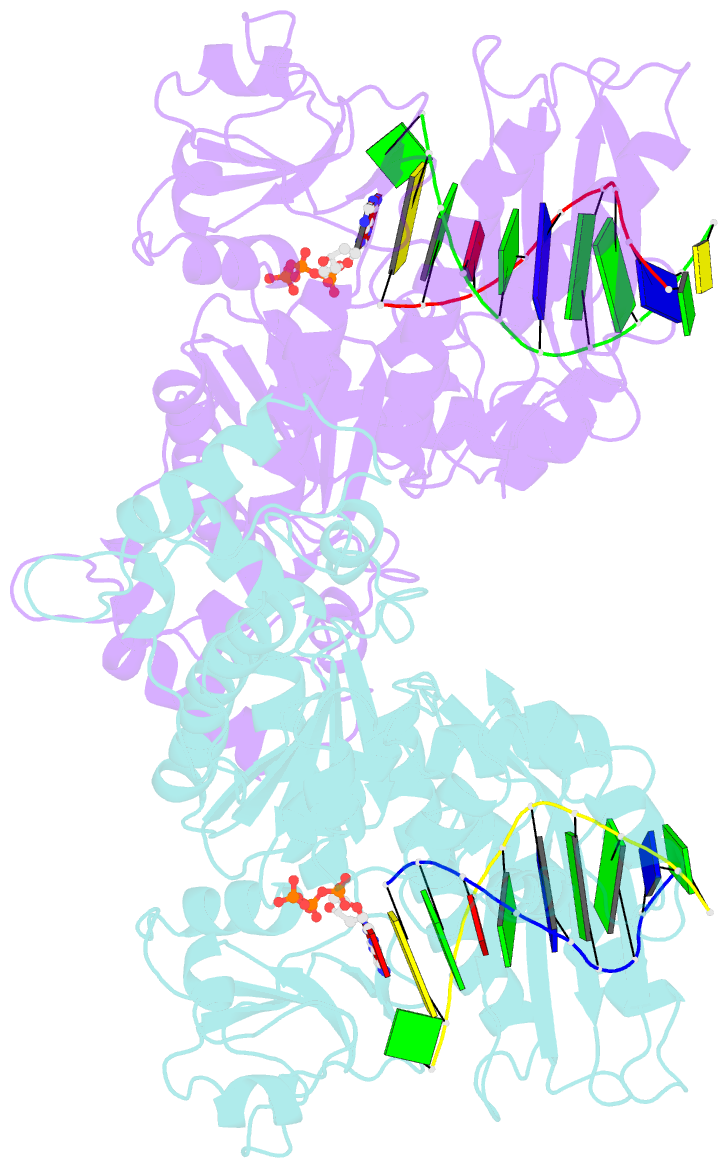Summary information and primary citation
- PDB-id
- 2r8k; SNAP-derived features in text and JSON formats;
DNAproDB
- Class
- replication, transferase-DNA
- Method
- X-ray (3.3 Å)
- Summary
- Structure of the eukaryotic DNA polymerase eta in complex with 1,2-d(gpg)-cisplatin containing DNA
- Reference
- Alt A, Lammens K, Chiocchini C, Lammens A, Pieck JC, Kuch D, Hopfner KP, Carell T (2007): "Bypass of DNA lesions generated during anticancer treatment with cisplatin by DNA polymerase eta." Science, 318, 967-970. doi: 10.1126/science.1148242.
- Abstract
- DNA polymerase eta (Pol eta) is a eukaryotic lesion bypass polymerase that helps organisms to survive exposure to ultraviolet (UV) radiation, and tumor cells to gain resistance against cisplatin-based chemotherapy. It allows cells to replicate across cross-link lesions such as 1,2-d(GpG) cisplatin adducts (Pt-GG) and UV-induced cis-syn thymine dimers. We present structural and biochemical analysis of how Pol eta copies Pt-GG-containing DNA. The damaged DNA is bound in an open DNA binding rim. Nucleotidyl transfer requires the DNA to rotate into an active conformation, driven by hydrogen bonding of the templating base to the dNTP. For the 3'dG of the Pt-GG, this step is accomplished by a Watson-Crick base pair to dCTP and is biochemically efficient and accurate. In contrast, bypass of the 5'dG of the Pt-GG is less efficient and promiscuous for dCTP and dATP as a result of the presence of the rigid Pt cross-link. Our analysis reveals the set of structural features that enable Pol eta to replicate across strongly distorting DNA lesions.





